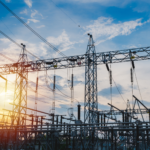India’s electrical engineering sector is undergoing significant transformation, driven by a series of recent government policies aimed at enhancing infrastructure, promoting sustainability, and ensuring safety. These initiatives are designed to align the country’s electrical engineering practices with global standards, boost domestic manufacturing, and address emerging challenges in the energy sector.
1. National Electrical Code of India 2023
In January 2023, the Bureau of Indian Standards (BIS) released a comprehensive revision of the National Electrical Code (NEC) of India. This code serves as a fundamental framework for electrical installations, providing guidelines to ensure safety and standardization across the country. The NEC 2023 encompasses eight parts and 49 sections, covering aspects such as general safety procedures, protection against electric shock, thermal effects, overcurrent, and voltage disturbances. It also addresses specific requirements for various installations, including industrial buildings, agricultural premises, hazardous areas, and solar photovoltaic systems. The code emphasizes the importance of proper design, selection, erection, and verification of electrical installations to prevent accidents and ensure compliance with safety standards.
To curb the import of sub-standard electrical goods and promote domestic manufacturing, the Department for Promotion of Industry and Internal Trade (DPIIT) issued the Electrical Accessories (Quality Control) Order in January 2024. This order mandates that electrical accessories such as switch-socket outlets and cable trunking bear the Bureau of Indian Standards (BIS) mark, ensuring adherence to specified quality standards. The regulation aims to enhance consumer safety and boost the credibility of domestically produced electrical components. Recognizing the challenges faced by Micro, Small, and Medium Enterprises (MSMEs), the government has provided extended timelines for compliance—small industries have an additional nine months, while micro enterprises have an extra twelve months to meet the standards.
In August 2024, the Ministry of Heavy Industry introduced the Machinery and Electrical Equipment Safety (Omnibus Technical Regulation) Order, set to take effect in August 2025. This regulation establishes stringent safety standards for machinery and electrical equipment manufactured or imported into India, aligning national practices with global norms. The order covers over 50,000 types of machinery, including critical industrial equipment like pumps, compressors, transformers, and switchgear. While large corporations may have the resources to comply, MSMEs face significant challenges due to financial, technical, and infrastructural constraints. To mitigate these challenges, industry experts suggest extending compliance timelines, implementing the regulations in phases, and providing government support to assist small businesses in meeting the new standards.
The All India Council for Technical Education (AICTE) unveiled a new model curriculum for undergraduate electrical engineering courses in November 2024. This curriculum aims to bridge the gap between academic learning and industry requirements by focusing on practical, hands-on training and exposure to emerging technologies. Key features include courses on artificial intelligence, renewable energy, and machine learning, as well as opportunities for industry exposure through field visits and internships. The curriculum is designed to equip students with critical thinking skills, ethical leadership qualities, and an entrepreneurial mindset, preparing them to tackle real-world challenges in the electrical engineering sector.
In December 2024, the Indian government mandated that, starting June 2026, all clean energy projects must utilize solar photovoltaic (PV) modules made from domestically produced cells approved by the government. This policy aims to reduce dependence on imports, particularly from China, and bolster the domestic solar manufacturing industry. At the time of the announcement, India’s PV module production capacity was approximately 80 gigawatts (GW), while cell production capacity was just over 7 GW. To meet the growing demand, several companies have announced significant investments in solar cell manufacturing. For instance, Tata Power is developing a 4.3 GW plant in southern India, Reliance Industries is establishing a 20 GW facility in Gujarat, and the Adani Group operates an existing 4 GW plant in the same state. These developments are expected to enhance self-reliance in the renewable energy sector and create numerous opportunities for electrical engineers specializing in solar technologies.
As part of its strategy to diversify energy sources and reduce carbon emissions, India’s National Thermal Power Corporation (NTPC) announced plans in February 2025 to invest $62 billion over the next two decades to build 30 GW of nuclear power capacity. This ambitious plan significantly increases NTPC’s earlier goal of 10 GW and comes in the wake of government initiatives to open the nuclear sector to foreign and private investments. NTPC is collaborating with the Nuclear Power Corporation of India on two plants and is seeking land in eight states for additional sites. Potential partnerships with companies from France and the United States are also being explored. The government’s proposal to amend existing laws aims to facilitate private investment and reduce liabilities that have previously deterred foreign suppliers. This expansion is poised to create a substantial demand for electrical engineers with expertise in nuclear energy, offering opportunities in design, construction, operation, and maintenance of nuclear power plants.
Despite ambitious plans to expand renewable energy capacity, India faces a significant skills shortage in the sector. A November 2024 report highlighted that the lack of adequately trained professionals is hindering the growth of domestic solar manufacturing and the broader clean energy industry. The renewable energy sector requires a workforce skilled in emerging technologies such as battery storage, advanced grid integration, and solar and wind energy systems. To address this gap, the government has formed a joint panel with industry representation to enhance training programs and upskilling initiatives. Efforts include increasing funding for education and training, offering incentives to attract talent, and facilitating international training opportunities. These measures aim to equip electrical engineers with the necessary skills to meet the evolving demands of the renewable energy sector and support India’s commitment to adding




